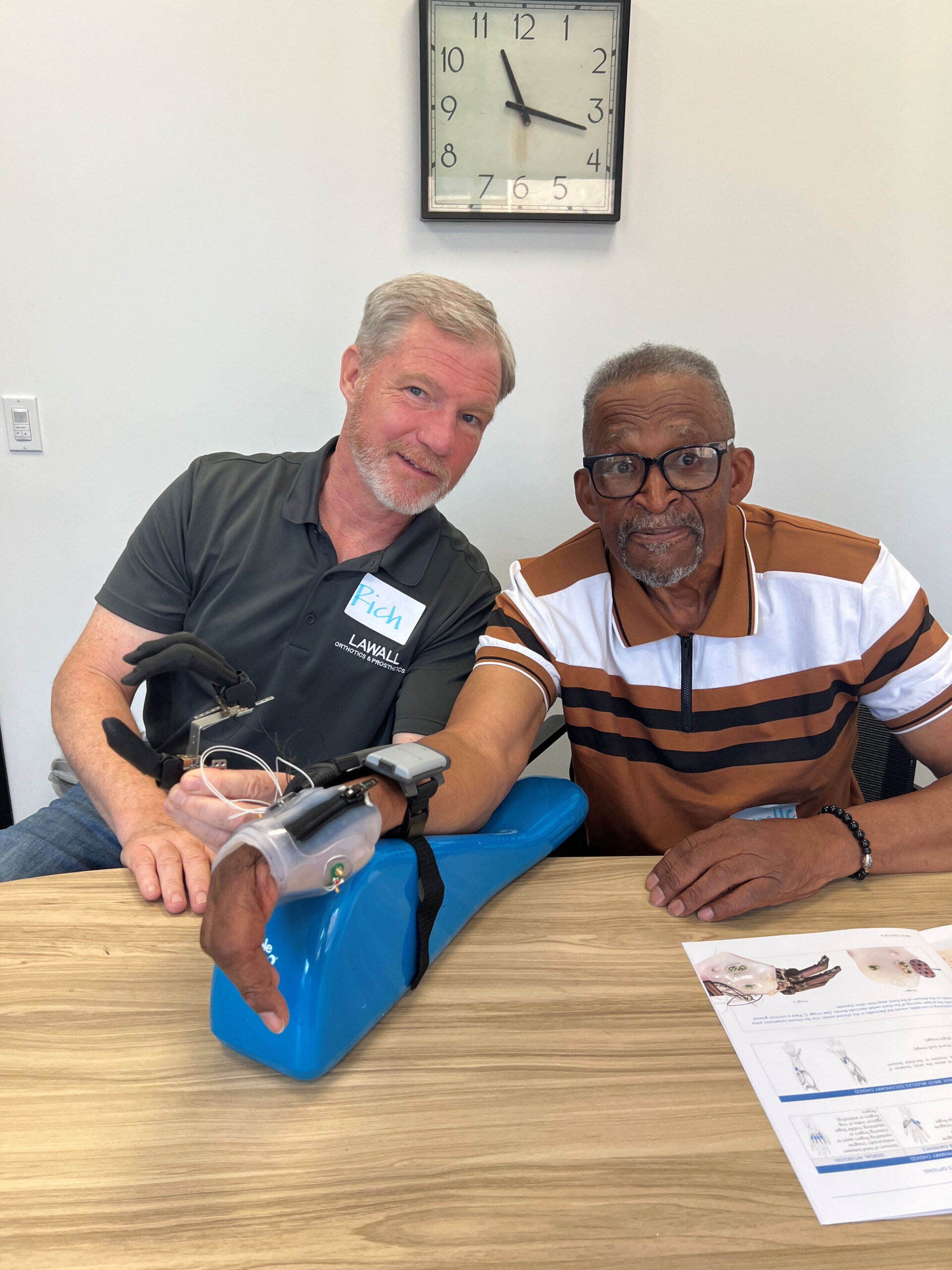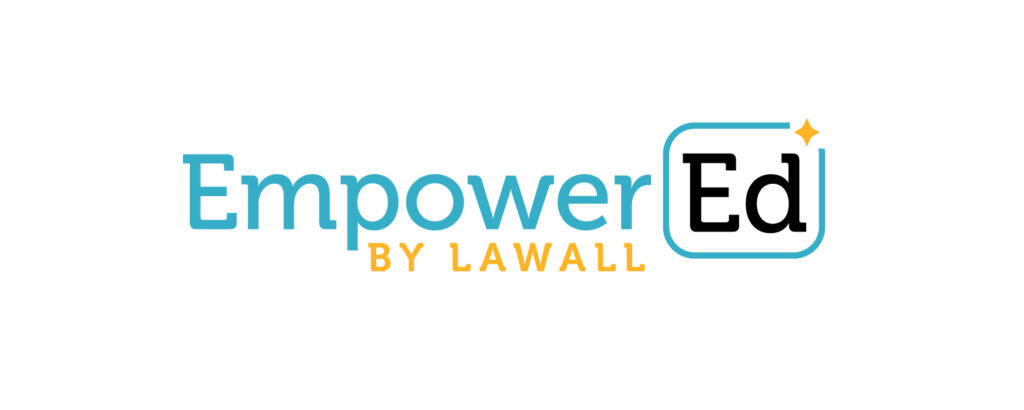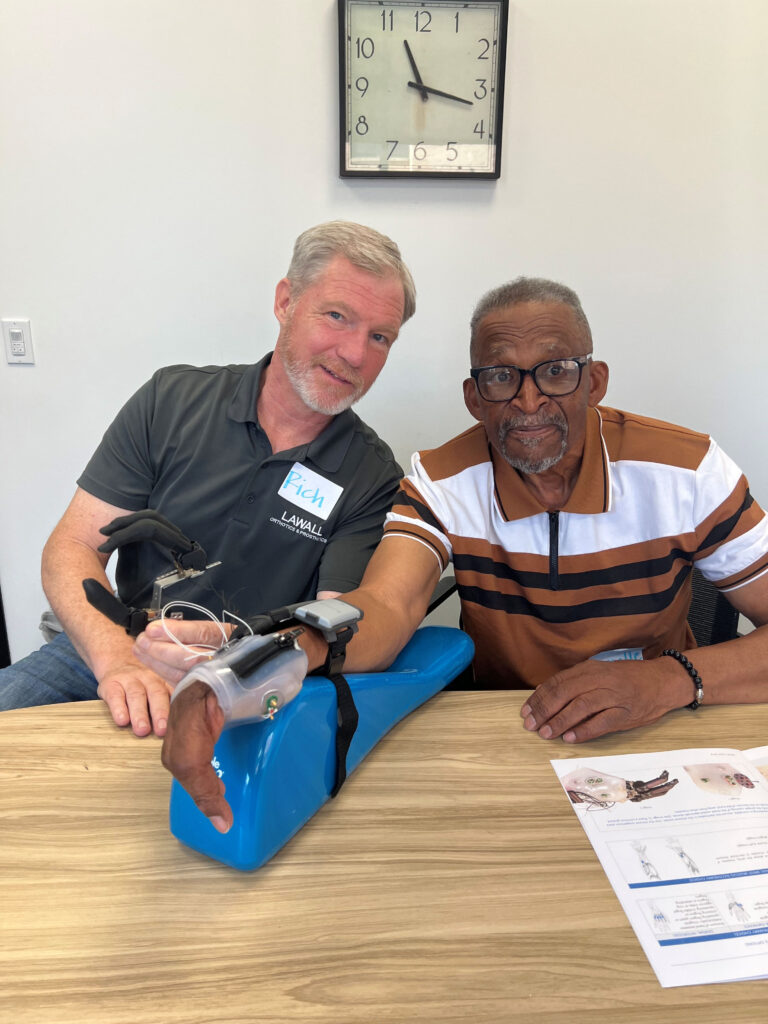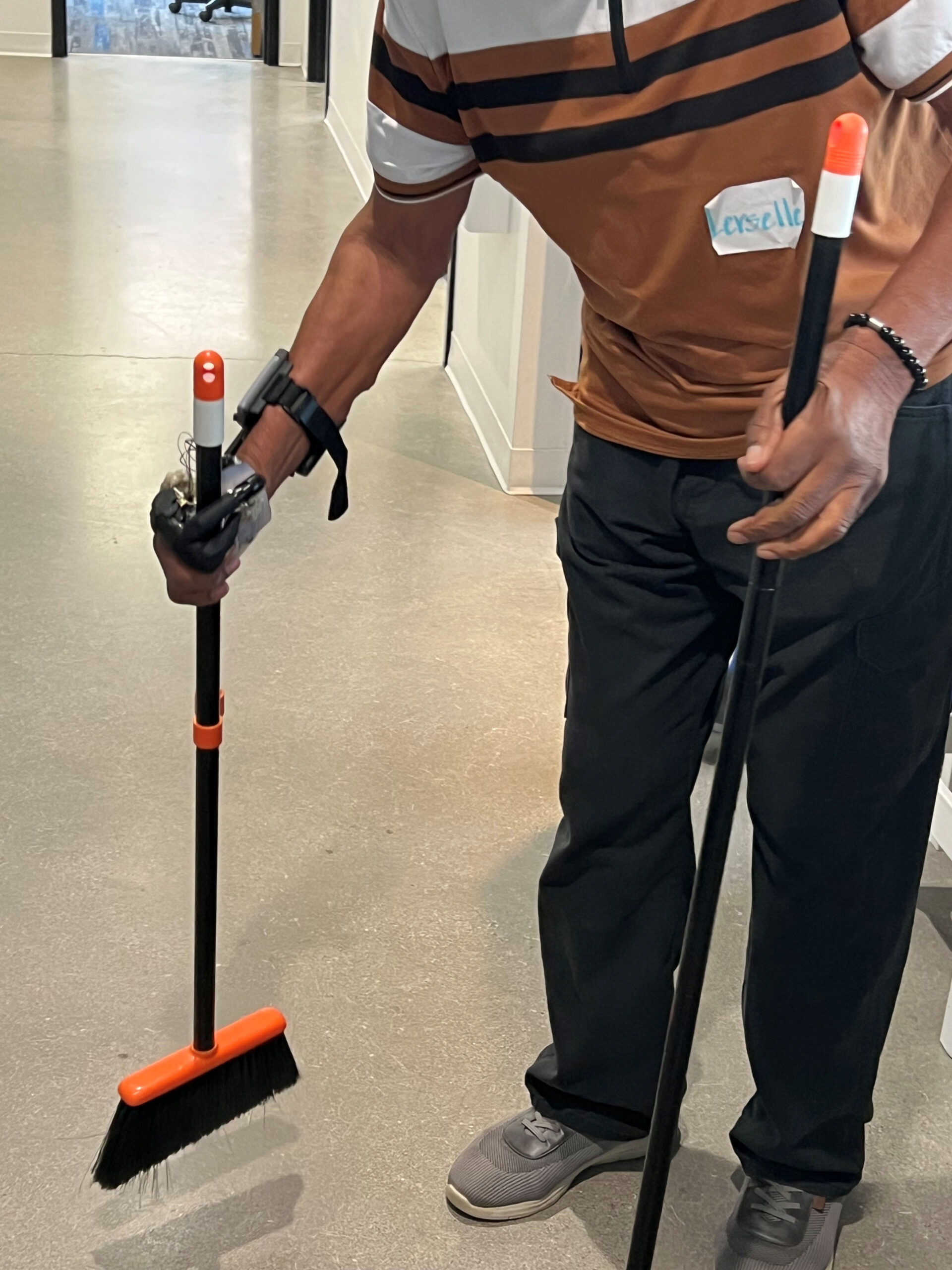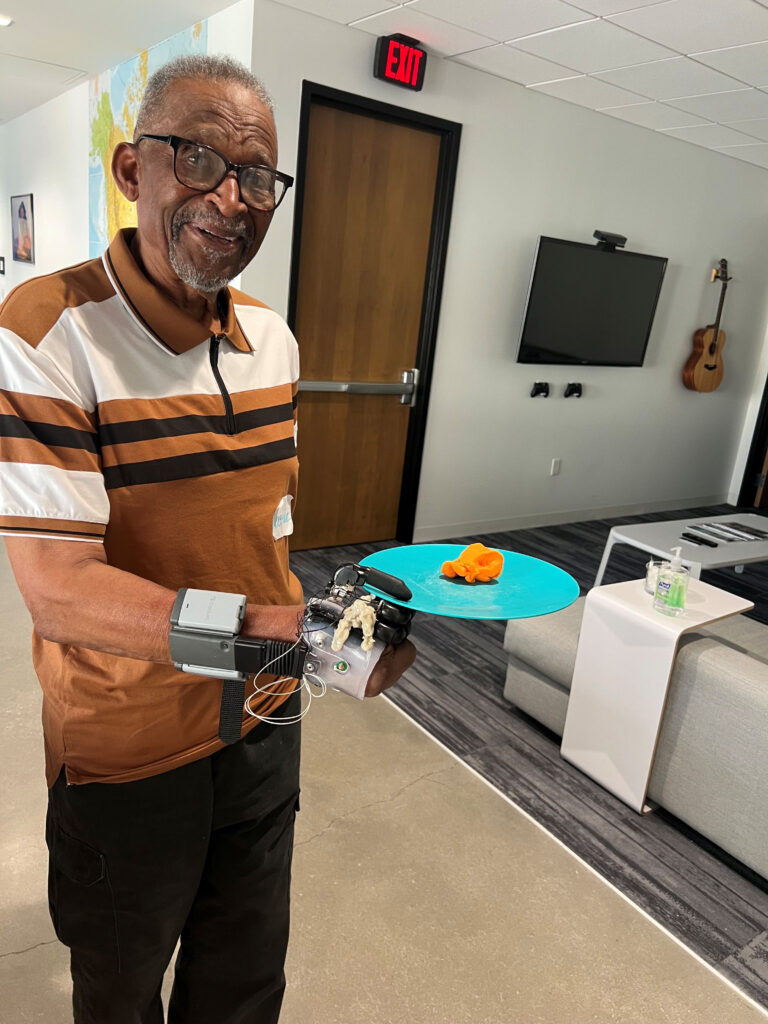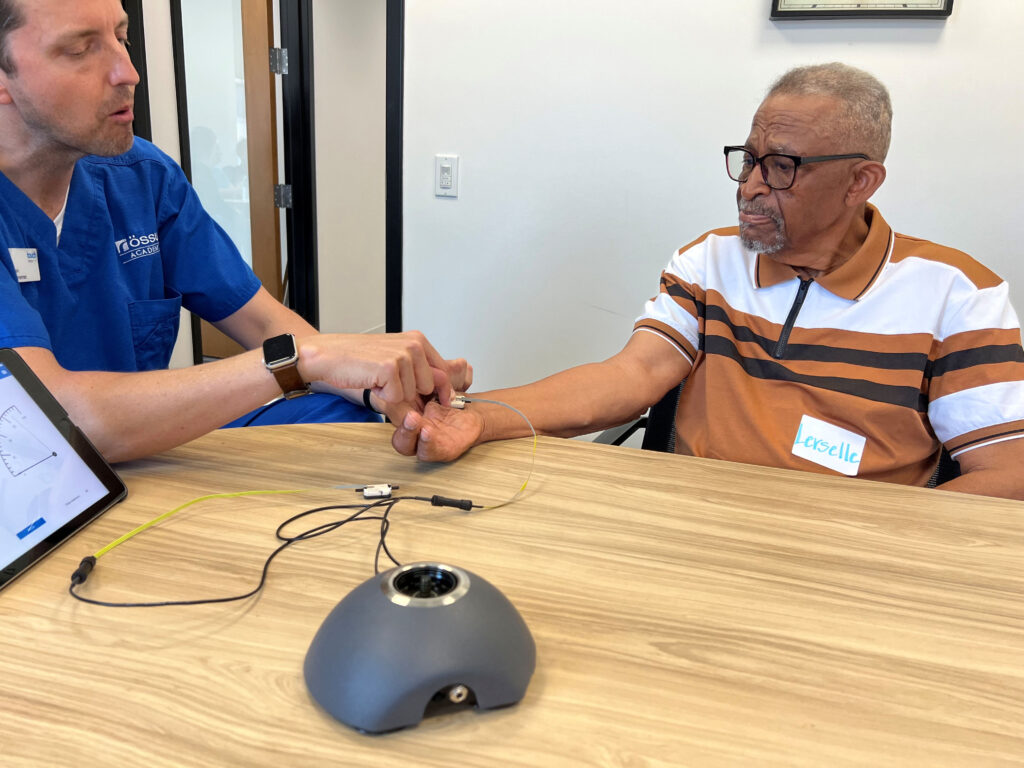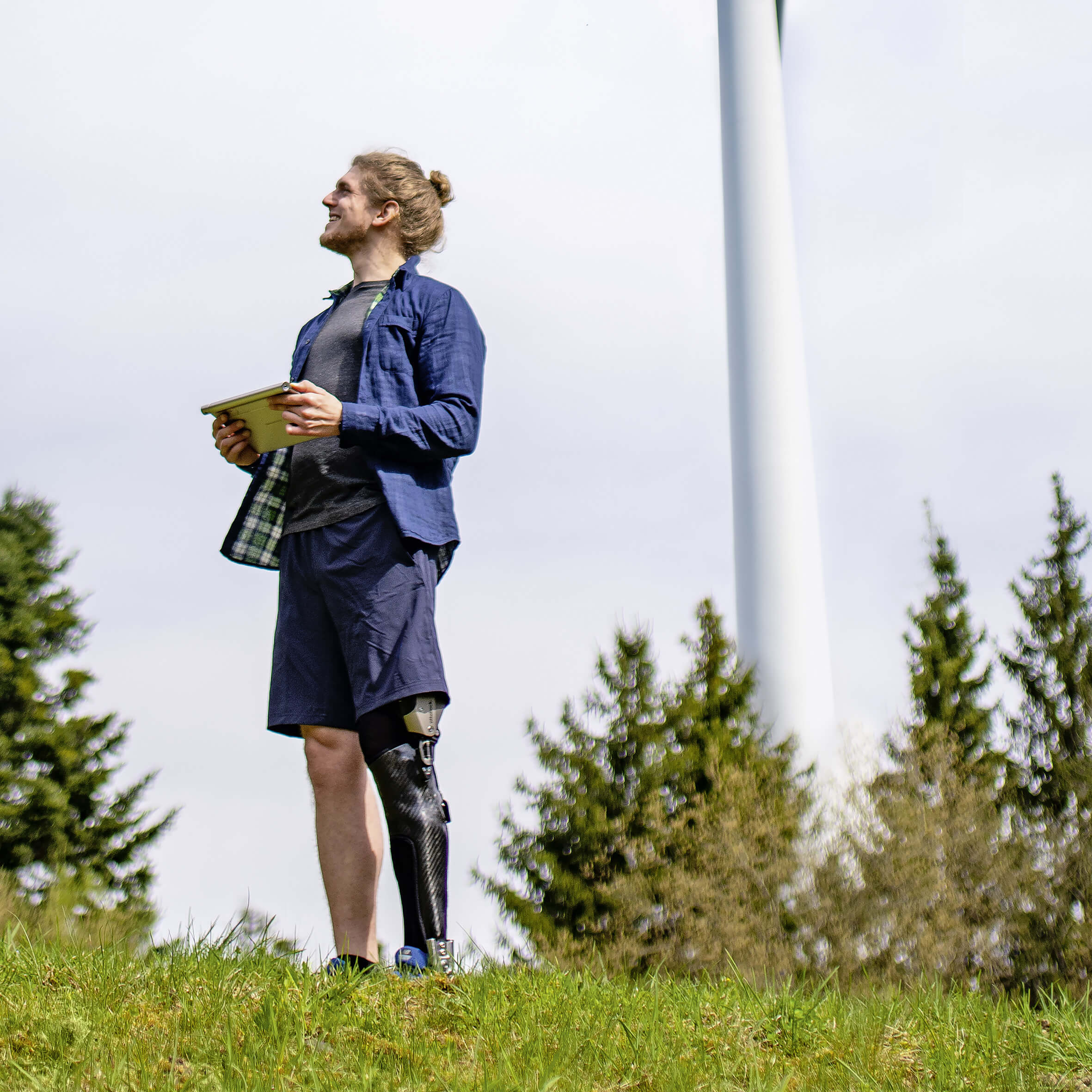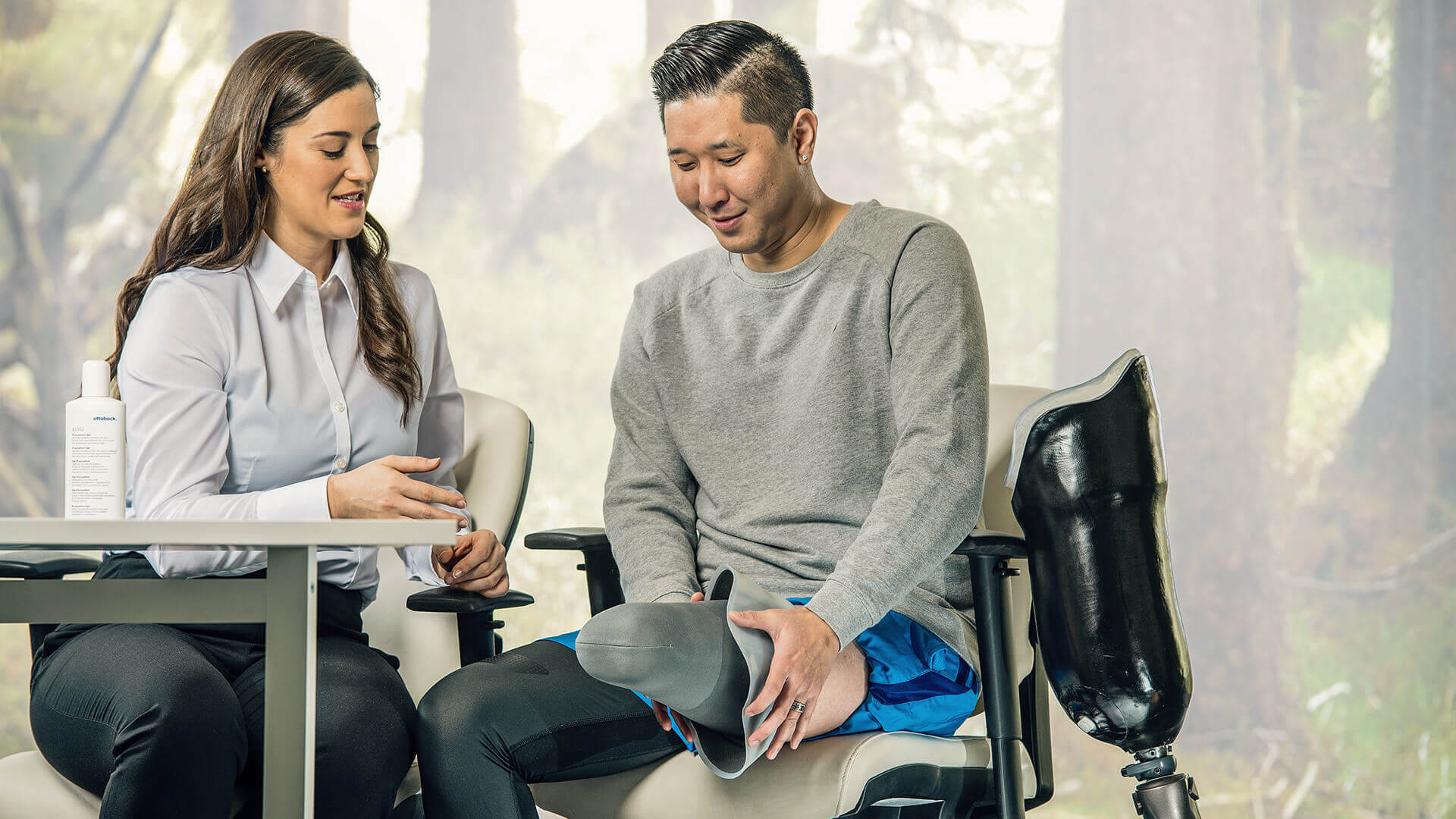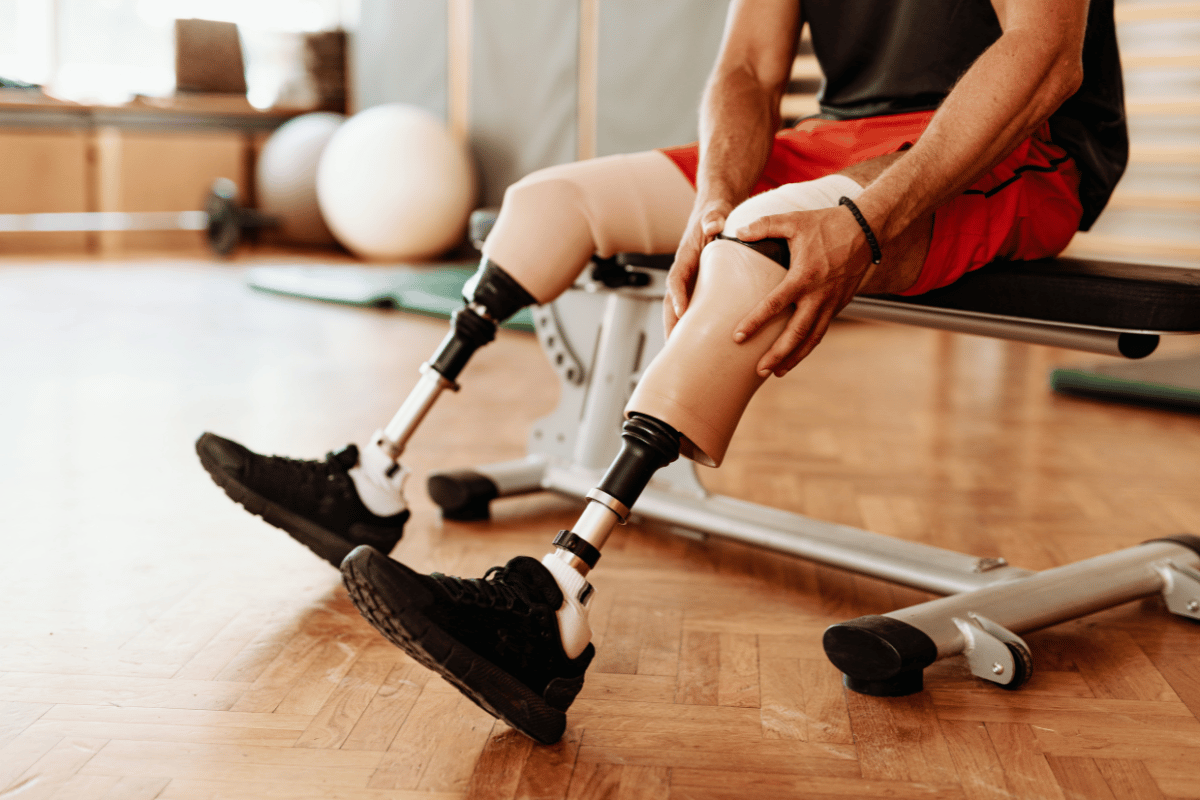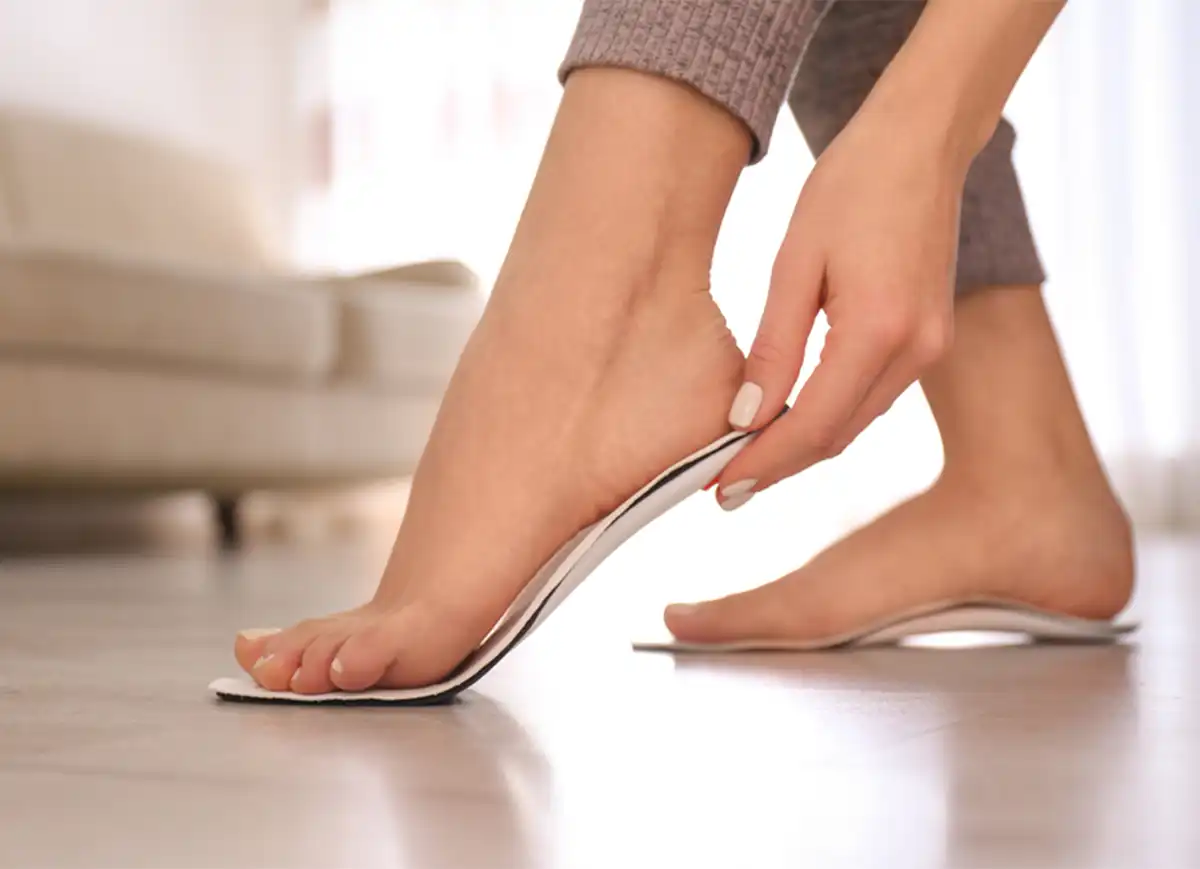The I-Limb Quantum Digits offered an amazingly adaptable and versatile solution for Howard, who needed a partial hand with three digits, Bash explains. “With his level of amputation, other choices were available, but none that would give him this much functionality.
“The prosthetic is myoelectric, controlled by Lerselle’s own muscles; so we had to determine the placement of dual-site electrodes on his hand. One electrode, positioned on the palm of his hand, where his thumb once was, allows him to close the prosthetic hand when he activates that muscle group. The second electrode is placed on the fleshy portion of the palm below his little finger, so he can open the prosthetic by flexing his pinky.”
The individual fingers can also be moved independently or in combination—such as folding in the middle and index fingers while lifting and then closing the thumb, as if to grip and support a plate. This is something Howard has been unable to do since his original injury, Bash points out.
“His thumb will flex and extend electronically, or back and forth; or depending on the placement, he can manually rotate the thumb where he needs it to be,” Bash adds.
Although the length of time patients require to adapt to using such prosthetic devices can vary, Bash confirms that Howard was an amazingly quick study.
“We arrived at the Ossur upper extremity clinic in Ohio on Monday morning,” he said. “They had manufactured a check socket based on a silicone cast of Lerselle’s hand which we had sent earlier, and they were ready to place the electrodes and adjust the fit when we arrived. By Monday afternoon, with the
check socket, he was able to pick up blocks and a pen, and do a multitude of things with that hand, in just the check-socket stage! He adapted very quickly, even impressing the experienced Ossur professionals with how quickly he took to it.”
Bash recalls that on the second day at the Ossur clinic, they were at a buffet luncheon where Howard was using his prosthetic. Howard noted happily that it was the first time in many years that he’d been able to get his own plate of food—“and hold the plate and scoop food at the same time.” Previously,
a family member would have to fill and bring his plate, he explained. Currently, he delights in this small freedom that enables priceless independence.
After some training and practice, Howard and Bash returned home on Thursday, with no need for further therapy.
“He took to it so quickly with guidance from the Ossur Clinic’s occupational therapist that he doesn’t need any further treatment or training,” Bash explains. “If it had been a newer injury and he hadn’t been so functional without a prosthesis for so long, it might have been different.”
Support from Howard’s family is plentiful and constant. Photos sent home to his wife, Marsha, as he was fitted with his new hand, were circulated to relatives, friends and “all over the world!” he laughs.
His large family includes maybe 400 or 500, he claims. “I went to the family reunion a few years ago and I haven’t really got over it yet! All my father and mother’s offspring, a whole lot of people!”– including his own six children, 10 grandchildren, and ‘too many great grandchildren to count.’
